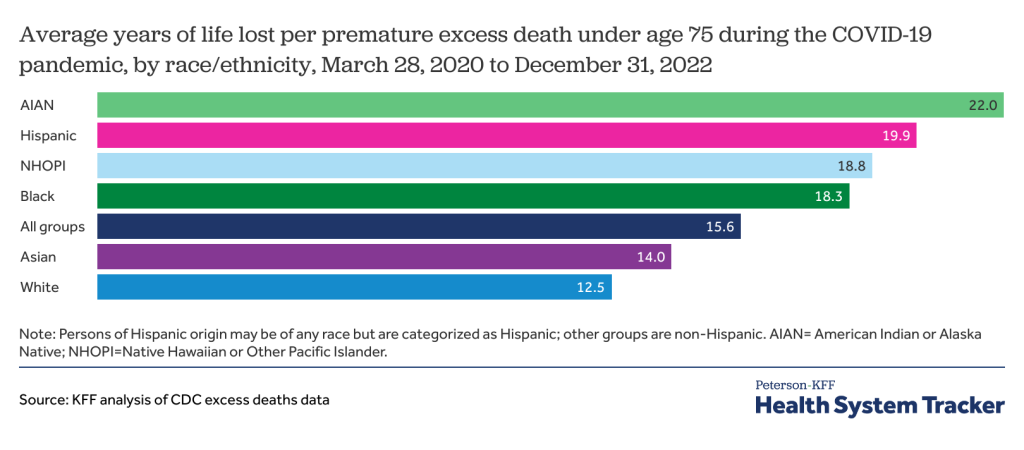The Nation Overall Also Experienced Higher Rates of Premature Deaths than Peer Countries
During the COVID-19 pandemic, people of color on average died at younger ages than White adults, resulting in substantial racial disparities in premature death and years of life lost, a new analysis finds.
The analysis examines the Centers for Disease Control and Prevention’s excess deaths statistics during the pandemic, which captures not only deaths caused by COVID-19 but also higher-than-expected deaths from other causes such as drug overdoses, suicide, health disease and liver disease.
During the pandemic, all racial and ethnic groups experienced an increase in their premature mortality rate (defined as per capita deaths among people under age 75), though this rate rose more sharply among people of color than among White people.
Expressed another way, White people who died prematurely (under age 75) during the pandemic on average lost 12.5 years of life, significantly less than the average years lost among American Indian and Alaska Native (22), Hispanic (19.9), Native Hawaiian and Other Pacific Islander (18.8), Black (18.3), and Asian (14) people.

Collectively, the analysis estimates that people in the United States lost 14.8 million years of life due to excess deaths from March 2020 when the pandemic began through December 2022, with a disproportionately large share of those lost years affecting people of color.
A separate analysis compares the rates of premature deaths in the United States with other large and wealthy peer countries through 2021 (the most recent year for which international data are available).
The U.S. had the highest rate of premature death among the group of 12 nations during the two-year period. The U.S. on average had more than two times the average years of life lost per 100,000 people as the United Kingdom, the country with the next highest rate.
The two analyses, “Racial Disparities in Premature Deaths During the COVID-19 Pandemic” and “Premature Mortality During COVID-19 in the U.S. and Peer Countries,” are both available through the Peterson-KFF Health System Tracker, an information hub dedicated to monitoring and assessing the performance of the U.S. health system.

